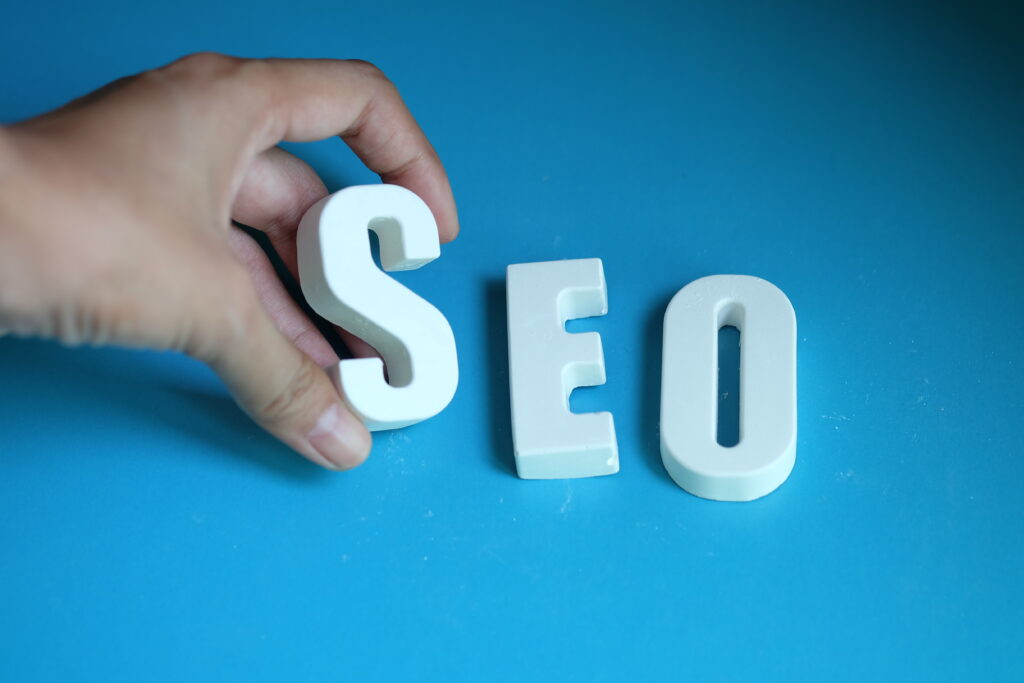Introduction
If you’re new to digital marketing, you may have heard the terms SEO V/s SEM thrown around. While they may sound similar, they refer to two distinct approaches to online marketing. SEO (search engine optimization) is all about optimizing your website to improve its search engine rankings and increase organic traffic. SEM (search engine marketing), on the other hand, involves paid advertising to target specific demographics and generate revenue quickly. In this article, we’ll explore the differences between SEO V/s SEM and help you determine which approach is best for your business goals.
What Is SEO?

Types of SEO.
On-Page SEO:
- Keyword research and placement
- Content creation and optimization
- Header tags, title tags, meta description tags
- Images and ALT text
- URL structure
- Conversion optimization
- User experience
- And so much more!
Off-Page SEO:
- Link building
- Increasing traffic from social media to your website
- Guest blogging
- Asset creation (infographics, videos, etc.)
- Press releases
- And more!
Technical SEO
- Website structure and hierarchy
- URL structure and optimization
- Mobile-friendliness and responsive design
- Site speed and page load time optimization
- XML sitemap creation and submission
- Robots.txt file creation and optimization
- Canonicalization and duplicate content management
- SSL certificate installation for HTTPS security
- Schema markup implementation for rich snippets
- Broken link identification and fixing
- Image optimization and alt tag usage
What Is SEM?

In the context of SEO V/s SEM, it’s important to understand that while SEO primarily targets industry and locality, SEM (search engine marketing) provides marketers with the powerful ability to hyper-target their desired demographics through paid search engine advertising. It’s worth noting that SEO is technically a component of the broader SEM strategy.
You’ve likely encountered these ads while conducting online searches on Google – they appear either to the side or at the top of search results, subtly labeled as ads. These instances exemplify the principles of SEM in action. When the words people input into Google match the keywords you’re actively bidding on, your ad gains visibility within search results. Unlike SEO, where no direct monetary exchange occurs with search engines, SEM involves a payment mechanism when someone interacts with your ad. This interaction may take the form of visiting your website or dialling the provided phone number.
Digital marketers have the capability to craft hyper-targeted paid advertisements across various social media platforms. However, the most prevalent and effective method for this purpose is Pay-Per-Click ads (PPC). Google Ads stands out as the most popular and efficient PPC avenue, although Bing and Yahoo also offer similar options. Once your ads are running, you gain access to detailed performance reports, allowing you to make real-time adjustments to optimize your campaign’s effectiveness.
SEO Vs. SEM Similarities

1. Brand Awareness
Both SEM V/s SEO are valuable strategies for enhancing brand awareness. By gaining visibility in organic search results and securing positions in pay-per-click and other advertising formats, you can increase exposure and enhance brand trust and credibility. These tactics work together to establish a strong brand presence and connect with a wider audience.
2. Increasing Traffic
SEO and SEM are both effective in driving website traffic. By appearing in organic and paid listings across different digital marketing channels, you can attract visitors to your website. Combining title tags, meta descriptions, and other SEO tactics with well-crafted ads and content that targets searchers can be an excellent formula for website traffic growth.
What Is PPC Hyper-Targeting?
To grasp the true effectiveness of PPC, it’s essential to appreciate how demographic and hyper-targeting strategies differ in the realms of SEO and SEM.
In SEO, the approach often involves utilizing general industry and local keywords to drive organic traffic to your website. For instance, consider the keyword “hair salon in Atlanta” – it conveys the industry and ensures that you attract the appropriate local traffic. However, when a hair salon offers a wide range of services, this is where PPC steps in. Within the context of SEO V/s SEM, PPC provides a means to hyper-target your audience based on a myriad of interests and specific needs. This level of precision includes considerations such as geographic location, age range, gender, parental status, and income level.
In PPC, your advertisements exclusively appear for users who are actively searching for your specified keywords and who also fall within your meticulously defined demographic criteria. It’s crucial to note that you only incur charges when users click on your ads. In fact, PPC is so effective at hyper-targeting that some digital marketers exclusively specialize in providing this type of marketing service.
Just like with all Simplilearn courses, you have the flexibility to learn at your own pace or within an instructor-led learning environment. Upon successful completion of your Advanced PPC Training, you’ll not only be proficient but also certified in platforms like Google Ads, Bing Ads, Google Analytics, and YouTube Advertising. To hone your skills, you’ll have access to five (5) industry-specific projects and 126 live demonstrations, allowing for ample practice and mastery in the dynamic landscape of SEO V/s SEM.
SEO V/s SEM, The 7 Key Differences
1. Cost
When it comes to SEO V/s SEM, the costs associated with each can impact the return on investment. While SEO requires a higher investment and takes longer to achieve results using relevant keywords, it can yield a high return on investment over time. On the other hand, SEM has a faster ramp-up period, lower investment requirements, and generates revenue faster compared to SEO.
2. Result Time
When comparing SEO and SEM, time is a significant factor to consider. SEM can generate traffic and results almost immediately, while SEO can take a few months to show an increase in traffic to your website. If you require traffic from search engines for a specific event quickly, then SEM is the better option. However, if you’re planning to launch a content hub around high-value content for the next few years, SEO is the right choice. Both SEO and SEM have their strengths and weaknesses, and it’s essential to understand which one will work best for your business goals.
3. Long-Term Value
In terms of SEO V/s. SEM and SEO have a significant advantage when it comes to compounding and long-term value. With the right strategy, your web pages can stay at the top of search engine results pages for years and generate revenue with little to no investment. Although most SEO costs are front-loaded, it takes a significant initial investment to create appropriate content and produce link-building for organic results.
When a page ranks in one of the top three positions, its ranking becomes self-sustaining. Organic results turn into backlinks, improving your rank and yielding more backlinks.
As you improve SEO, organic results compound over time. As your domain gains authority, individual web pages do as well. SEO is the only content marketing investment that increases in value over time.
On the other hand, SEM only offers transactional gains. Once your paid ads or pay-per-click ads stop, so do the organic traffic and leads from the campaign. Compared to SEO, SEM only generates revenue in the short term and does not have the same compounding effect that SEO has over time.
4. Testing Ability
When it comes to SEO V/s. SEM, starting an SEO program to optimize your website and organic search results can take months to see an impact and conduct keyword research to evaluate specific strategies. In contrast, SEM is a useful web marketing tool for quick testing and insights for different web pages. With SEM, you can test your marketing strategy and ensure search engines understand your keywords, SEM campaigns, and more at a faster pace.
Moreover, you can improve landing pages based on accurate data from search queries in a shorter time using SEM. In comparison, SEO takes more time to gather data and insights to improve landing pages. Therefore, while SEO is a long-term investment, SEM offers quick insights and testing for your web pages.
5. SERP Space
When comparing SEO V/s. SEM and SEO create the opportunity for a brand to capture more real estate in search engine results pages (SERPs). This includes snippets, knowledge graphs, and map listings, as well as links for “people also ask,” interesting finds, image or video carousels, and more.
By using multiple digital assets, SEO allows you to occupy more listings in search results. In contrast, SEM only offers search ad positions, including PPC ads, extensions, and site links. Thus, SEO provides more opportunities for a brand to appear in search results and gain visibility compared to SEM.
6. Click-Through Rate Of SEM & SEO
When comparing SEO vs. SEM, SEO has higher click-through rates compared to paid traffic and ads. The average click-through rate for Google Ads is 3.17 percent for search results [1]. On the other hand, the number one organic position in Google can produce a click-through rate of 34.2 per cent.
This means that investing in SEO can yield higher click-through rates and organic traffic compared to SEM. While SEM offers a faster way to generate revenue, SEO provides a higher return on investment in the long run by increasing organic traffic and visibility in search results.
7. Trustworthiness Of SEM & SEO
When it comes to SEO V/s. SEM, searchers tend to overwhelmingly trust organic search results because they know those positions are earned through time and not purchased through paid ads or results. This is because Google has prioritized user experience and content quality, which has widened the trust gap between SEO and SEM.
This means that investing in SEO can not only increase organic traffic and visibility in search results but also build trust with users. While SEM offers a quick way to generate revenue, SEO provides a more sustainable way to build a brand’s reputation and credibility in the eyes of users.
Conclusion
when comparing SEO V/s SEM, it’s important to understand that they are both valuable strategies in digital marketing, but they serve different purposes.
SEO (Search Engine Optimization) focuses on optimizing a website to improve its organic search engine rankings and increase organic traffic. It involves various techniques such as keyword research, on-page optimization, and link building. SEO offers long-term value, compounding results over time, and building trust with users through organic search results.
On the other hand, SEM (Search Engine Marketing) involves paid advertising on search engines to drive targeted traffic to a website. It includes strategies like pay-per-click (PPC) ads and keyword bidding. SEM provides quick results, immediate visibility, and the ability to hyper-target specific demographics.
While SEO is a long-term investment that increases organic traffic and builds credibility, SEM offers faster results and more control over targeting specific audiences. Both strategies have their strengths and weaknesses, and the choice between SEO and SEM depends on your specific business goals and timeline.
In summary, SEO vs SEM is not a matter of choosing one over the other, but rather understanding how they complement each other in a comprehensive digital marketing strategy. By combining the power of SEO and SEM, businesses can maximize their online visibility, attract targeted traffic, and achieve their marketing objectives.
